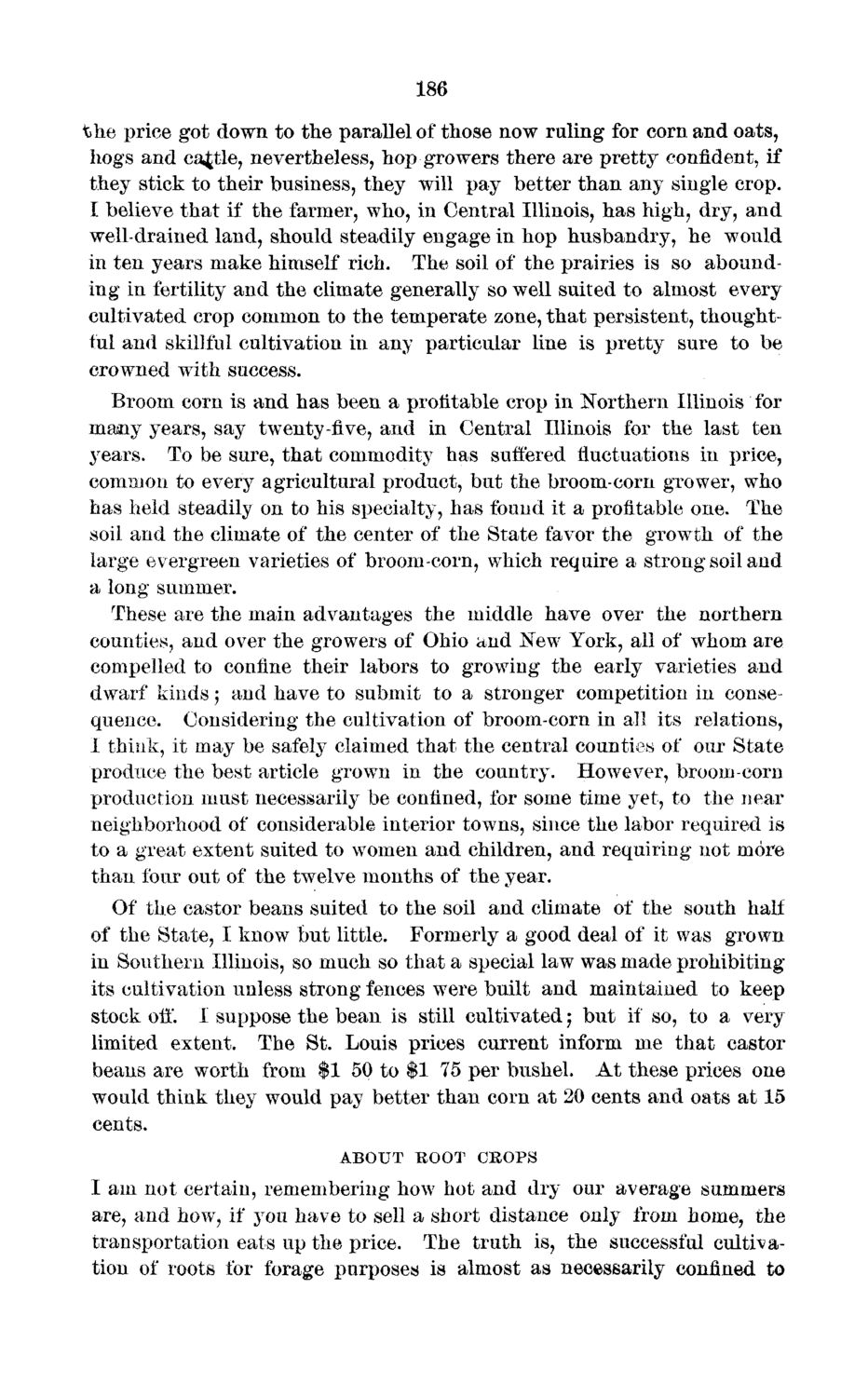| |
| |
Caption: Board of Trustees Minutes - 1873
This is a reduced-resolution page image for fast online browsing.

EXTRACTED TEXT FROM PAGE:
186 t)he price got down to the parallel of those now ruling for corn and oats, hogs and cattle, nevertheless, hop growers there are pretty confident, if they stick to their business, they will pay better than any single crop. I believe that if the farmer, who, in Central Illinois, has high, dry, and well-drained land, should steadily engage in hop husbandry, he would in ten years make himself rich. The soil of the prairies is so abounding in fertility and the climate generally so well suited to almost every cultivated crop common to the temperate zone, that persistent, thoughtful and skillful cultivation in any particular line is pretty sure to be crowned with success. Broom corn is and has been a profitable crop in Northern Illinois for many years, say twenty-five, and in Central Illinois for the last ten years. To be sure, that commodity has suffered fluctuations in price, common to every agricultural product, but the broom-corn grower, who has held steadily on to his specialty, has found it a profitable one. The soil and the climate of the center of the State favor the growth of the large evergreen varieties of broom-corn, which require a strong soil and a long summer. These are the main advantages the middle have over the northern counties, and over the growers of Ohio and New York, all of whom are compelled to confine their labors to growing the early varieties and dwarf kinds $ and have to submit to a stronger competition in consequence. Considering the cultivation of broom-corn in all its relations, I think, it may be safely claimed that the central counties of our State produce the best article grown in the country. However, broom-corn production must necessarily be confined, for some time yet, to the near neighborhood of considerable interior towns, since the labor required is to a great extent suited to women and children, and requiring not more than four out of the twelve months of the year. Of the castor beans suited to the soil and climate of the south half of the State, I know but little. Formerly a good deal of it was grown in Southern Illinois, so much so that a special law was made prohibiting its cultivation unless strong fences were built and maintained to keep stock off. I suppose the bean is still cultivated) but if so, to a very limited extent. The St. Louis prices current inform me that castor beans are worth from $1 50 to $1 75 per bushel. At these prices one would think they would pay better than corn at 20 cents and oats at 15 cents. ABOUT ROOT CROPS I am not certain, remembering how hot and dry our average summers are, and how, if you have to sell a short distance only from home, the transportation eats up the price. The truth is, the successful cultivation of roots for forage purposes is almost as necessarily confined to
| |